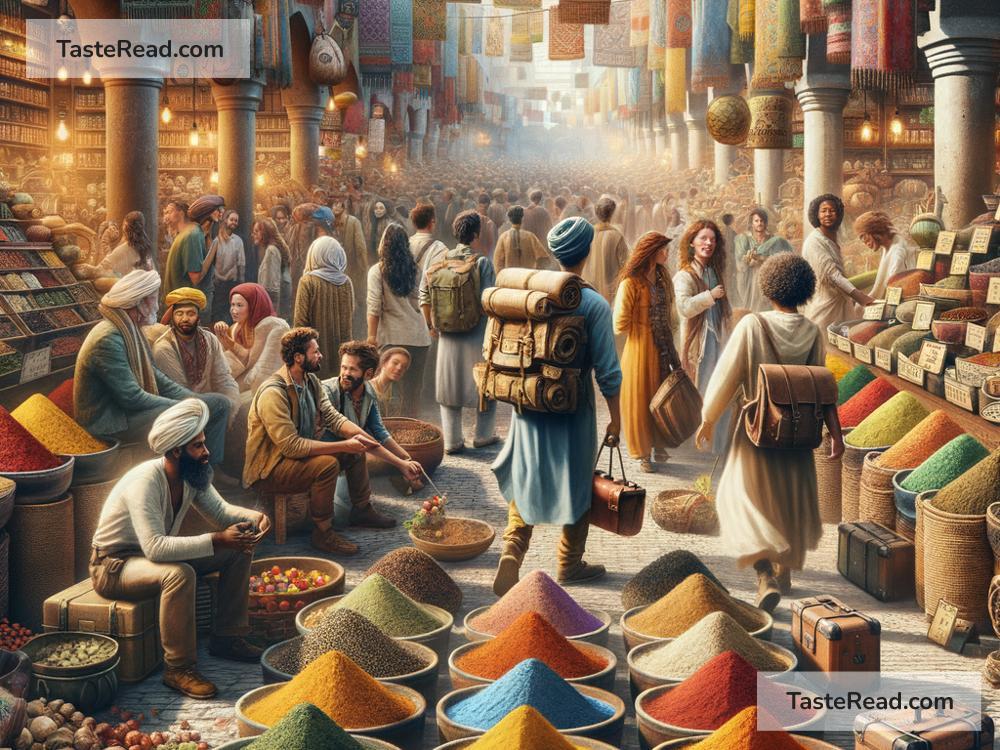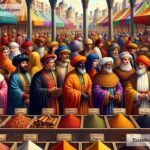How Spices Became Symbols of Travel and Adventure
Throughout history, the idea of travel has sparked curiosity and excitement in humans. Adventure fills us with wonder, and the search for new lands, cultures, and treasures has fueled countless journeys across the globe. Among the treasures sought by explorers in the past, spices stood out as some of the most valuable goods. But how did spices, these flavorful ingredients we use in cooking today, come to represent travel and adventure? Let’s take a journey through history to understand the story.
The Origins of Spice Trade
Thousands of years ago, spices like cinnamon, pepper, nutmeg, and cloves were rare and precious. They weren’t found everywhere; they grew only in specific regions such as India, the Middle East, Sri Lanka, and Southeast Asia. Because they were not common, spices were highly sought after, and people were willing to travel great distances to get them.
Spices were not only used to flavor food. They had many other uses—people believed they had healing powers and could cure illnesses. Some spices were used in religious ceremonies and rituals, while others were preserved to keep food fresh longer. Their uses made spices even more desirable, and they became important items of trade.
As trade routes developed between regions, spices began to move across borders. Merchants risked dangerous journeys through deserts, mountains, and oceans to bring spices to far-off lands. These early spice traders were among the first globetrotters, bringing with them stories of distant cultures and exotic places.
Spices as Global Currency
By the Middle Ages, spices were as valuable as gold. For example, black pepper, often called “black gold,” was so prized that it was sometimes used as currency. Royals and wealthy families stocked their kitchens with spices to show their wealth and status. Owning spices didn’t just mean you could cook flavorful meals—it meant power, prestige, and connection to the world beyond your home.
As demand grew, traders began to look for faster and safer ways to reach spice-producing regions. This need for efficient transportation contributed to the development of global trade routes that connected Europe, Africa, Asia, and the Americas.
The Age of Exploration
The European Age of Exploration in the 15th and 16th centuries was largely fueled by the desire to find new trade routes to valuable goods, especially spices. During this time, explorers like Christopher Columbus and Vasco da Gama set sail on long voyages in search of places where spices grew.
Christopher Columbus’s journey to the Americas in 1492 was motivated by the search for the “spice islands,” though he ended up finding new lands instead. Vasco da Gama’s voyage to India in 1498 opened up direct access to spices for European traders. These journeys marked the beginning of global exploration as we know it today, making spices symbols of adventure and discovery.
The search for spices carried explorers to previously unknown parts of the world. They were introduced to new cultures, foods, languages, and ideas—all because of the global pursuit for these tiny treasures.
Spices in Culture and Storytelling
The fascination with spices continued to grow even as they became more available. Spices came to symbolize distant lands and exotic adventures, and they inspired stories, myths, and legends. Tales of merchants bringing rare spices from the far corners of the earth, braving storms and dangerous seas, painted a picture of daring and bravery.
Even in modern times, spices remain tied to the idea of travel and adventure. When you smell cinnamon, saffron, or cardamom, it can transport you to another place in your imagination—perhaps a bustling Indian market, a Moroccan spice bazaar, or the tropical spice plantations of Southeast Asia.
How Spices Changed the World
The spice trade didn’t just bring goods; it also connected people from different continents and cultures. It led to the exchange of ideas, technology, and traditions. The blending of spices in cooking is a beautiful example of how cultures came together. Today, many popular dishes, such as curry, stir-fry, and pasta sauces, use spices that come from far-off lands.
Spices also played a role in shaping history, economy, and politics. European colonization of many countries, including India and Indonesia, was driven by the spice trade. While this period brought great challenges for local populations, it also introduced the world to the diversity of spice-flavored cuisines and traditions we enjoy today.
Conclusion
Spices are not just ingredients used to enhance food—they are symbols of adventure, curiosity, and exploration. Their journey across the globe shows how connected humans are, with trade routes linking us regardless of borders. For thousands of years, spices have inspired daring voyages and tales that remind us how exciting the idea of travel can be.
So next time you sprinkle cinnamon on your dessert or grind some pepper onto your soup, take a moment to think about the incredible journey these spices took to get to your kitchen. They carry stories of faraway places, brave explorers, and the rich history of human adventure—a small reminder of just how big and interconnected our world is.


